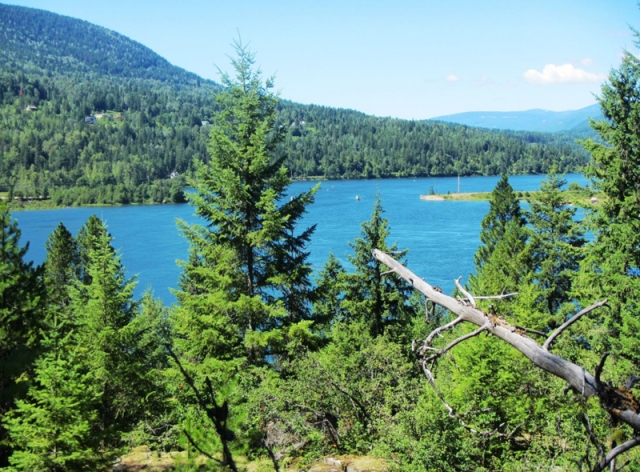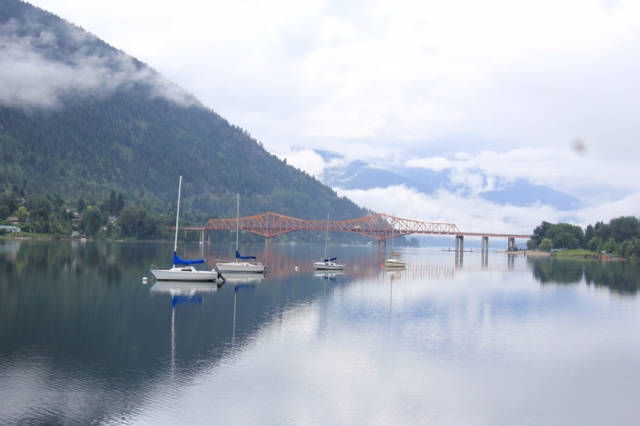Flood of 1948 kick starts Columbia River Treaty
Since 2005, Eileen Delehanty Pearkes has researched and explored the natural and human history of the rivers of the upper Columbia River Basin.
She speaks frequently at conferences and symposia throughout the Basin on the history of the Columbia River Treaty and its effects on Basin residents. She has recently completed a manuscript titled A River Captured – history and hydro-electricity in the upper Columbia Basin.
An American by birth, Pearkes has been a resident of Canada since 1985 and Nelson since 1994. She has written many articles and several books that explore place and its cultural meaning.
The Geography of Memory, a history of the landscape and indigenous people of the upper Columbia watershed published in 2002, remains a Kootenay classic.
Pearkes has agreed to help The Nelson Daily readers understand the importance of the Columbia River Treaty to the region with another edition of River Talk.
As much as snow defines the upper Columbia watershed in Canada, it all melts and then water becomes the bounty. Whether we live in Nelson, Castlegar, Kaslo or Revelstoke, water flows past us day in and day out, all of it headed downstream across the international boundary.
Rivers charged by snowmelt like the Columbia and its tributaries, have the potential to flood once each spring when a large volume of water enters the system at once.
If snow-charged rivers are left in their natural states, the flood water rises for several weeks but eventually drains downstream. The timing on how that water drains has a lot to do with weather, something human beings cannot control.
In 1948, just a few years after diplomatic efforts began to coordinate management of the river on both sides of the international boundary, a big-water year arrived, placing new imperative on the discussions about how to manage water. That spring, snowpack was higher than normal in the mountains.
On its own, the snowpack wouldn’t guarantee flooding. Then, in early June, a heat wave struck the Pacific Northwest and the melt was on. The heat wave was followed by heavy rain. The combination sent water levels on the Columbia and its major tributaries (the Kootenay, Pend Oreille and Snake) rising fast.
When it was all over, damage to human property ran into many millions of dollars. Inadequate dikes protecting the city of Vanport, Oregon, gave way, destroying most of it.
Though Vanport was built on a floodplain with inadequate dykes by Kaiser Aluminum, the city’s destruction shocked and frightened officials. Smaller communities like Bonner’s Ferry, Idaho, Creston, Kimberley and Trail also all experienced damage to property or agriculture.
The Columbia Basin was more populated than it had been in 1894, the last time there had been a major flood. Those discussing how to manage the Columbia, began to see the spring snow-melt season as something downright dangerous.
The timing of the 1948 flood increased the human desire to control the river and intensified the discussions that had begun a few years earlier. Managing the natural hydro-power of the Columbia watershed broadened to include the control of a raging river that produced damaging floods.
The tremendous ecological benefits of these annual floods, including their role in salmon and sturgeon spawning, were not well understood by a society that emphasized agriculture and industry.
By the early 1950s, the twin goals of flood control and efficient power production were set, and negotiations between the two countries were under way.
The Army Corps of Engineers, a U.S. institution charged with irrigation, flood control and water management, was involved, as was the International Joint Commission, a group of American and Canadian engineers consulted whenever there were trans-boundary river issues.
Also involved in the early discussions were the federal government of Canada led by Prime Minister Diefenbaker, and the province of B.C., led by a man who was to become a legend: W.A.C. Bennett.
While this may seem like a lot of history for a daily, web-based newspaper, the history is important to set the stage for what happened next. The Columbia River Treaty that we have today, a water management agreement that influences so much about the economy and culture of our region, is a product of its time.
In the 1950s post-war North America, it seemed that almost anything was possible, including the wrestling down of one of the most powerful rivers in the West.
Read the first River Talk.
























Comments